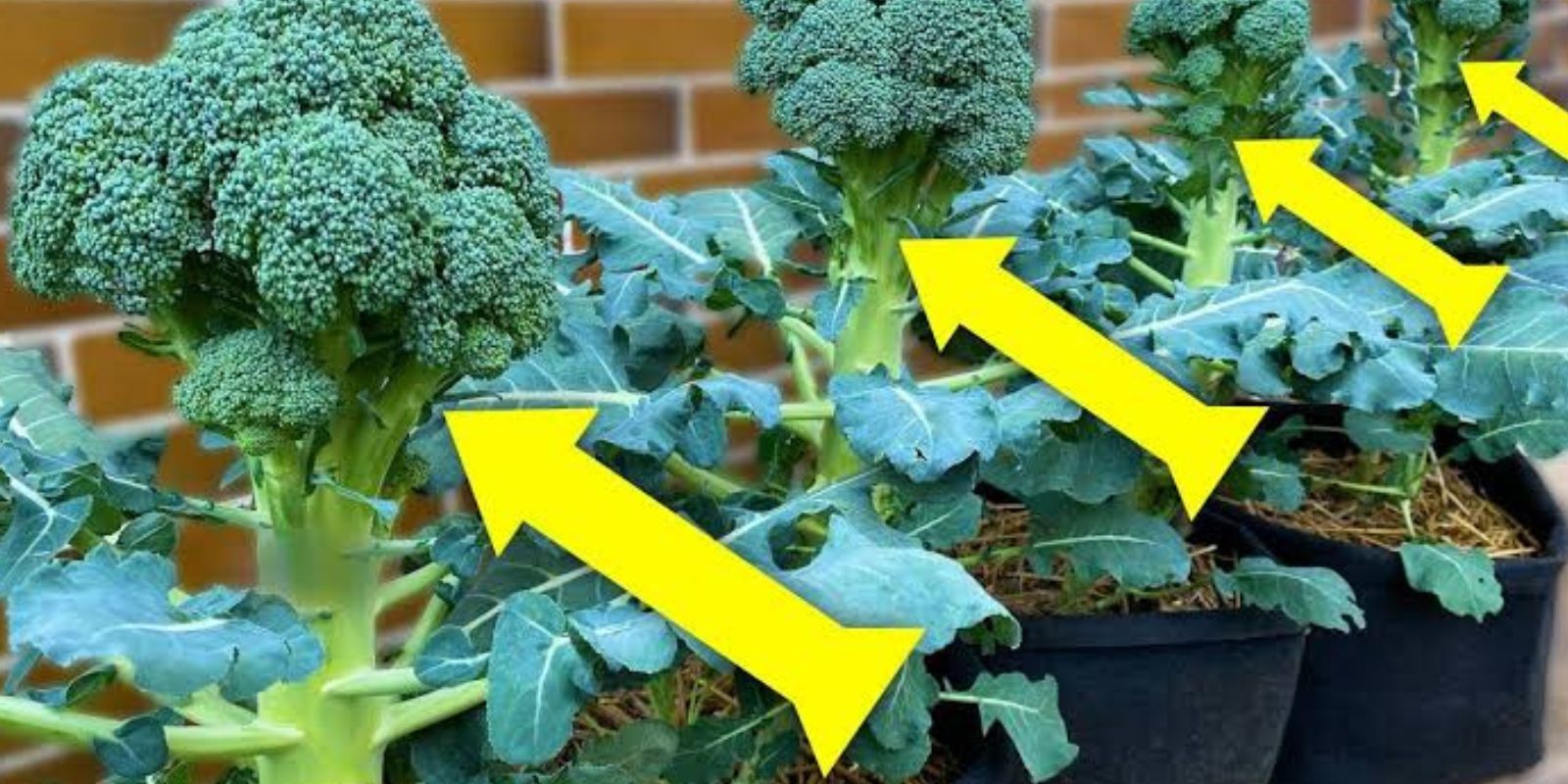Growing your own food is one of the most rewarding gardening experiences, and broccoli is a fantastic vegetable to cultivate at home—even in limited space. With the right approach, you can successfully grow fresh, nutrient-rich broccoli in containers. This guide will take you through the entire process, from selecting the right container to harvesting your first broccoli head.
Why Grow Broccoli in Containers?
Container gardening is an excellent solution for those with limited garden space. It allows you to control the growing conditions, manage pests more effectively, and move the plant to optimize sunlight exposure. Broccoli thrives in containers as long as it has enough room to grow and proper care is given.
Benefits of growing broccoli in containers:
- Ideal for small gardens, balconies, or patios
- Easier pest control
- Better soil quality management
- Ability to move plants based on weather conditions
Step-by-Step Guide to Growing Broccoli in Containers
1. Choosing the Right Container
Broccoli has deep roots, so selecting an appropriately sized container is crucial.
✅ Size: Use a pot that is at least 12-18 inches deep and 12-24 inches wide to accommodate the root system. A 5-gallon container works well for a single plant.
✅ Material: Terracotta, plastic, or fabric grow bags all work well, but ensure the container has drainage holes to prevent root rot.
✅ Number of Plants per Container: For optimal growth, plant one broccoli per 5-gallon pot or two plants in a larger 10-gallon container.
2. Selecting the Right Soil
Broccoli grows best in rich, well-draining soil that retains moisture without becoming soggy.
✅ Use high-quality potting mix rich in organic matter.
✅ Add compost or aged manure to enhance nutrients.
✅ Ensure the soil has a pH between 6.0 and 7.0 for optimal growth.
✅ Avoid using garden soil, as it may contain diseases and pests.
3. Planting Broccoli (Seeds vs. Seedlings)
You can grow broccoli either from seeds or seedlings.
✅ Starting from Seeds:
- Plant seeds ½ inch deep in the soil.
- Space them 3 inches apart if growing multiple plants in a large container.
- Keep the soil moist but not soggy.
- Seeds germinate in 5-10 days if kept in temperatures between 65-75°F (18-24°C).
✅ Using Seedlings:
- If transplanting seedlings, plant them at the same depth as they were in their previous container.
- Space them 12-18 inches apart in large containers.
- Water immediately after transplanting.
4. Providing Sunlight and Temperature Requirements
Broccoli thrives in full sun, requiring at least 6-8 hours of sunlight daily.
✅ Place your container in a south-facing location if growing indoors.
✅ If growing outdoors, position the container where it gets direct sun exposure.
✅ The ideal temperature range for broccoli is 55-75°F (13-24°C).
✅ Broccoli can tolerate light frost, making it a great cool-season crop.
5. Watering and Moisture Control
Proper watering is key to healthy broccoli plants.
✅ Keep the soil evenly moist, but avoid waterlogging.
✅ Water deeply every 2-3 days, or when the top inch of soil feels dry.
✅ Use mulch (straw or wood chips) around the base to retain moisture and regulate soil temperature.
✅ Avoid watering leaves directly to prevent fungal diseases.
6. Fertilizing for Maximum Growth
Broccoli is a heavy feeder and needs proper fertilization to grow well.
✅ Use organic fertilizer (compost tea, fish emulsion, or balanced NPK 10-10-10) every 2-3 weeks.
✅ Once the plant has established roots, switch to a phosphorus-rich fertilizer to encourage head development.
✅ Avoid over-fertilizing, as excessive nitrogen can result in more leaves and smaller heads.
7. Supporting and Pruning Your Broccoli Plant
✅ Use Stakes or Cages: As the broccoli grows, it may need support to prevent it from toppling over. Bamboo stakes or tomato cages work well.
✅ Remove Yellowing Leaves: Trim off any yellow or damaged leaves to promote healthier growth.
✅ Encourage Side Shoots: After harvesting the main head, do not pull out the plant—it will continue producing smaller side shoots.
8. Preventing Pests and Diseases
Broccoli is prone to pests like aphids, cabbage worms, and caterpillars.
✅ Common Pests:
- Aphids – Spray with neem oil or soapy water.
- Cabbage Worms – Pick them off manually or use Bt (Bacillus thuringiensis) spray.
- Flea Beetles – Use row covers to protect young plants.
✅ Common Diseases:
- Powdery Mildew – Prevent by maintaining good airflow and avoiding overhead watering.
- Root Rot – Prevent by using well-draining soil and containers with drainage holes.
9. Harvesting Your Broccoli
Broccoli is ready to harvest in 60-90 days after planting, depending on the variety.
✅ When to Harvest:
- The main head should be dark green, firm, and dense (about 4-7 inches across).
- Cut the main head with a sharp knife, leaving a few inches of stem.
- Continue watering and fertilizing to allow side shoots to develop, extending your harvest.
Bonus Tips for Success
🌟 Choose the Right Variety: Some great broccoli varieties for containers include ‘Calabrese,’ ‘De Cicco,’ and ‘Green Magic.’
🌟 Rotate Your Crops: If reusing the same container, plant a different vegetable after harvesting broccoli to maintain soil health.
🌟 Companion Planting: Grow marigolds, basil, or garlic nearby to repel pests naturally.
🌟 Extend the Growing Season: If growing in extreme temperatures, use a shade cloth in summer or a frost cover in winter.
Final Thoughts
Growing broccoli at home in containers is a fun and rewarding experience, even for beginners. With proper care, you’ll enjoy fresh, homegrown broccoli full of nutrients and flavor. By following these steps—choosing the right container, maintaining optimal soil conditions, watering consistently, and managing pests—you can have a successful harvest right from your patio, balcony, or small garden space.
🌱 Ready to start growing your own broccoli? Follow these steps and share your progress with us! Happy gardening! 🥦💚

